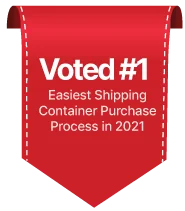Introduction to standardizing containers to improve shipping
Standardized containers were invented in the 1950s by Malcolm McLean, who first began experimenting with shipping cargo on oil tankers. It has shortened shipping time, improved security, and reduced costs.
However, what are some of the benefits of standardized containers?
Let’s discuss a few of these benefits. After all, we all love to save money and time! But how did standardized containers improve shipping?
Standardized containers are more cost-effective
The standard shipping container was invented by Malcolm McLean. McLean’s container helped simplify the process of loading and unloading cargo, reducing cost, time, and quality.
This innovation was so successful that it earned McLean induction into the Business Hall of Fame in 1982, and was named one of the top 10 innovators of the previous 40 years by Fortune magazine.
In addition, the container’s unique design meant that the product could remain within the container from the point of manufacture to its final delivery. This was especially important because of the dangers of deteriorating cargo during the transit process.
Containers are standardized by the ISO technical committee ISO/TC 104. Since 1961, this committee has standardized almost every aspect of a container’s dimensions and construction.
It has also standardized the type of twist locks used to secure containers to truck trailers and decks. In addition to standardization, these containers are highly adaptable and can be reused, saving money and time.
A standard shipping container can be used for a variety of different types of goods.
The cost of shipping a container depends on many factors, including the availability of the shipping container and the region.
The price of a shipping container may be cheaper in a city than in a rural area, but delivery fees could end up costing you more.
Some suppliers charge extra for remote locations, so it is essential to obtain a delivery quote. Look for flat rates and choose a supplier who offers them in multiple sizes.
If you are moving, you should check the costs of standardized shipping containers and their prices. Some companies only offer door-to-door service.
Door-to-door shipping is more cost-effective, but you may need to pay more if your shipping company charges extra for preparing your new address for delivery.
If you plan to move from one place to another, make sure that you find a company that offers door-to-door shipping.
They are more secure
Developed by Malcolm McLean, the standardized shipping container has numerous advantages over other shipping containers. Among these benefits is increased security.
A lockable container makes it difficult for thieves to steal goods while in transit. The smaller number of thieves means lower losses for businesses and lower prices for consumers.
The following are the benefits of standardized shipping containers. Listed below are some of their benefits. Read on to learn more.
In the past, goods were packed and shipped by hand. This resulted in deteriorating merchandise and theft. Additionally, the process was expensive and time-consuming.
A shipping container, however, provided a safe place for merchandise and allowed a crane operator to easily remove the product from a ship. This solution increased security and reliability. And it’s all thanks to the standardized shipping container. And what about the security?
Before standardized shipping containers, the break-bulk cargo was handled manually. This was time-consuming, expensive, and unreliable.
During World War II, U.S. military researchers explored using standardized small containers. Malcolm McLean made it possible to standardize container sizes for global trade.
By standardizing shipping container sizes, manufacturers could load trains and ships with standardized cargo. And standardizing container sizes also allowed just-in-time manufacturing.
Component suppliers could deliver specific components on a fixed schedule.
Lastly, standardized shipping containers are more environmentally-friendly. The more efficient shipping methods, including rail freight, become easier to use. This allows businesses to reduce their carbon footprint and save money.
In addition to this, standard shipping containers are easier to transport. And because the container is easy to load and unload, it reduces the need for expensive shipping.
The global economy depends on shipping and containerization as a means of transportation.
They are easier to track
The basic frame of a standard shipping container is the only part that bears weight. Steel is used, either weathered or corrosion-resistant, for this purpose. It helps keep the container stable and improves its stacking capacity.
The walls and roof panels rarely undergo any strain, and their primary function is to protect the goods. Steel and plywood are typically used as panels, but steel has a significant cost advantage.
The cost advantages are clear, and the shipping industry has greatly benefitted.
ISO standard containers have changed other freight-moving standards. For example, swap bodies have been forced into standard shapes and sizes in order to stack them.
ISO standard containers have transformed the way freight pallets are used globally. The standardized containers also simplify tracking. The logistics industry can now keep track of the exact location of each shipment by using the exact dimensions of each container.
The most common sizes are 20 and 40-foot containers.
In addition to improving tracking, standardized containers have other advantages. Because cargo is not visible to casual observers, it is much less likely to be stolen. Because container doors are normally sealed, the contents cannot be seen by outsiders.
Further, electronic monitoring devices are available that detect when the doors are opened or closed. Intelligent logistics optimization further improves cargo security. You can find some shipping companies that sell these kinds of containers in Pennsylvania, Rhode Island, and Tennessee.
These advantages are just a few of the reasons why standardized shipping containers are the most secure form of shipping.
Increasing trade in recent years has resulted in an increase in the number of container-based shipments.
However, a shortage of containers has posed several challenges. Because shipping volume has increased so dramatically, delays have significantly reduced the total capacity of a container.
As a result, delays are increasing and costs go up. This is counterproductive to SCM. Therefore, a standardized shipping container will reduce costs and enhance tracking.
They have shortened shipping times
Historically, the world has used different types of shipping containers. Standardized containers have made the process of shipping and receiving goods much quicker. They have also simplified the process of intermodal transport.
The first container was invented by Malcolm McLean, who was not even associated with ocean shipping. He actually owned a trucking company and came up with the idea to make intermodal transportation smoother.
While observing the way trucks and ships unload and transfer cargo, he became frustrated with the sloppy process of intermodal transport. This idea eventually led to the development of the standard shipping container.
The first commercial container ship sailed in 1956. The shipping container industry soon exploded. As the volume of global trade increased, the container grew in size and became easier to manage at scale.
Today, many products and services are transported using containers that measure at least forty feet long. A single cargo ship can carry thousands of containers. This has shortened shipping times and reduced costs. The size of the container has also reduced costs.
A major bottleneck in container deliveries has occurred this year as a result of the Covid-19 pandemic. This virus spread from Asia and across Europe.
As a result, many countries implemented lockdowns to halt production and economic movement. As a result, a large number of ships were left idle in ports, waiting for a better day.
When production in Asia started recovering, many empty containers were sent to North America and Europe. However, many countries have yet to lift the restrictions imposed on container shipments.
Because the container ships sail a fixed route, shortened shipping times are possible. Shipping lines operate a weekly service on one particular route. These routes are known as a string.
The container ship leaves its port every Tuesday and makes two calls a week. After two weeks, it reaches its final destination. It then returns to its port of departure. During the same cycle, another identical ship keeps the route.
They are less susceptible to damage
Using standardized containers makes them less likely to sustain damage during transport. Most standard containers are built with a steel basic frame.
Alternatively, they may be made of corrosion-resistant or weathered steel. The frame provides stability and stacking capacity.
The walls and roof panels rarely take a beating and only contribute to the protection of the goods inside. Both steel and plywood are commonly used as panels, though steel has its obvious cost advantage.
When shipping containers, damage analysis is a necessary step. It can help determine how much of the damage is actually incurred and whether it should be repaired.
Damage analysis helps prevent unnecessary repair costs. In addition, it reduces the risk of harm to people, goods, and vessels. The most common types of damage are rusting, breakage, and sagging.
A standardized container can withstand multiple types of damage, including abrasion, but it should not be too heavy to handle.
The first standardized shipping container was invented by Malcolm McLean in 1956. This invention helped reduce vessel turnaround time and made loading procedures more efficient.
Since then, this container became standard through the International Organization for Standardization. Because containers have standardized sizes, they are easier to stack and handle.
Standardized containers reduce labor costs. And the steel cover also helps protect cargo from damage. These benefits have contributed to the success of containerization in shipping.
In addition to improving shipping, standardized containers also have fewer problems with damage during transit. These containers are less likely to shift due to differences in temperature. This is due to their more rigid sidewalls.
Despite the fact that their weight has remained standardized for decades, the securing system used on chartered vessels has deteriorated. A lack of good securing systems causes lower containers to shift.
In addition to shifting, varying outdoor temperatures cause water to collect inside containers, damaging the goods. Consequently, water accumulates inside containers and promotes rusting.






 147 People have requested shipping container pricing this week through TheShip
147 People have requested shipping container pricing this week through TheShip